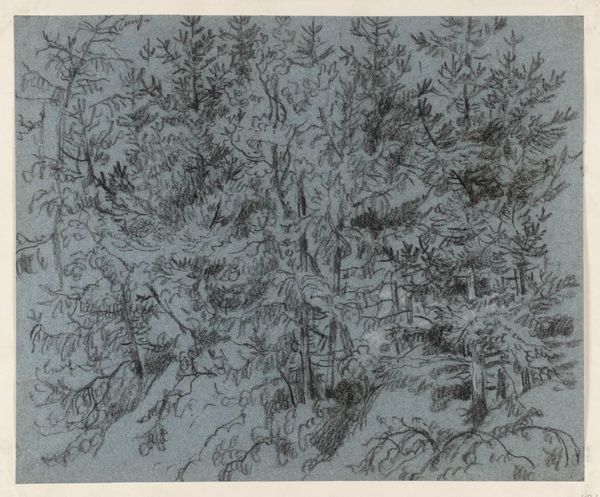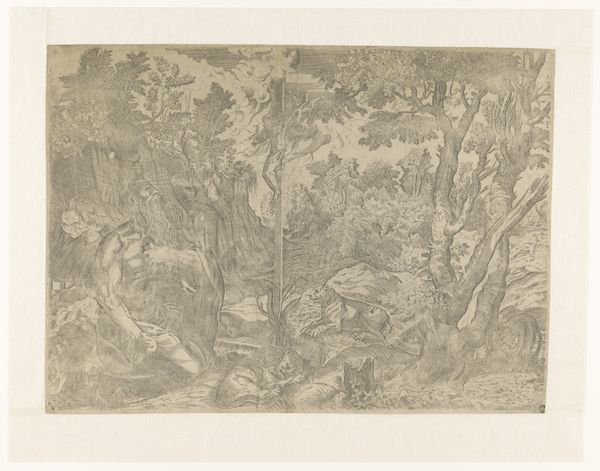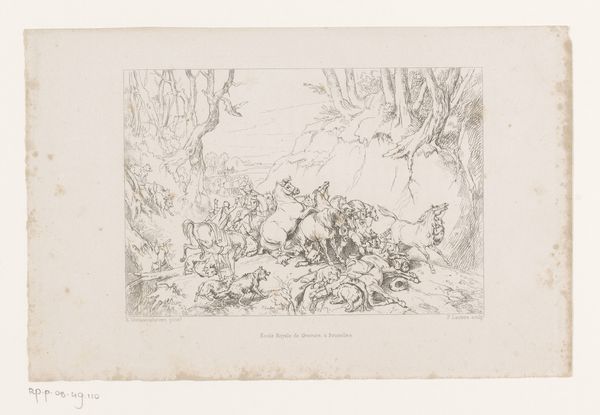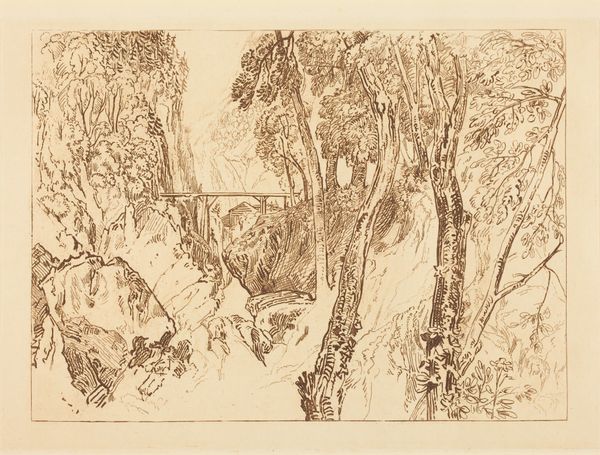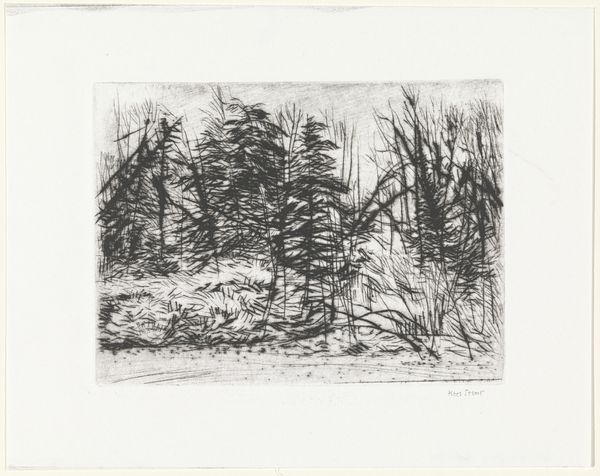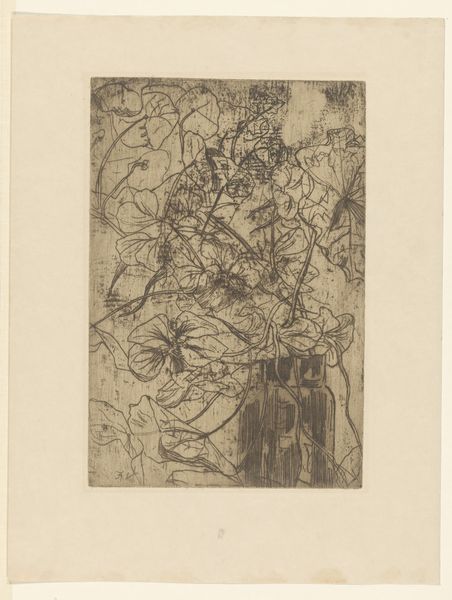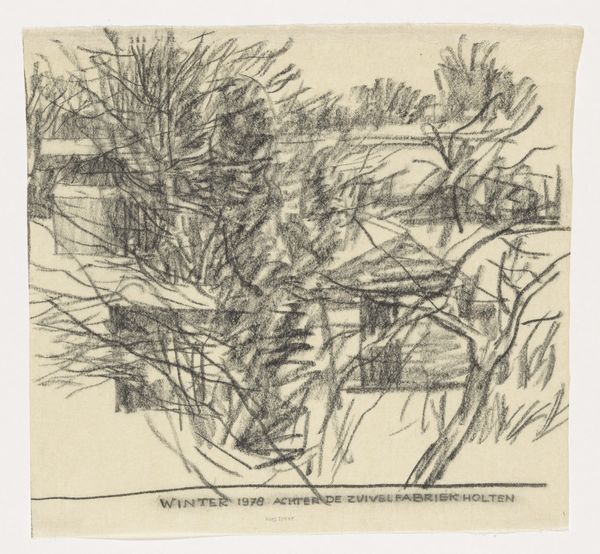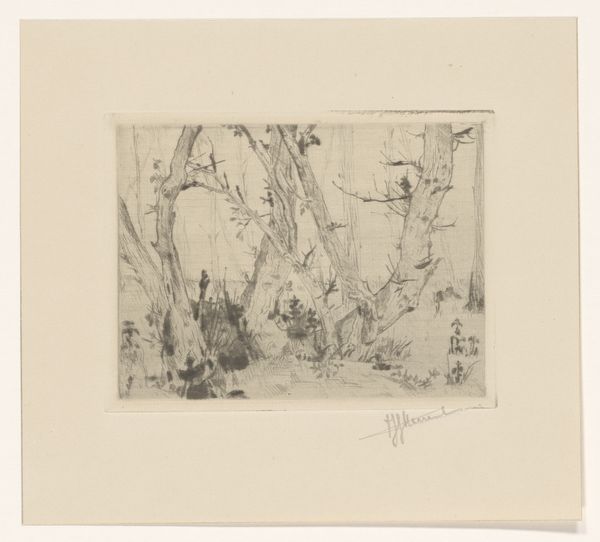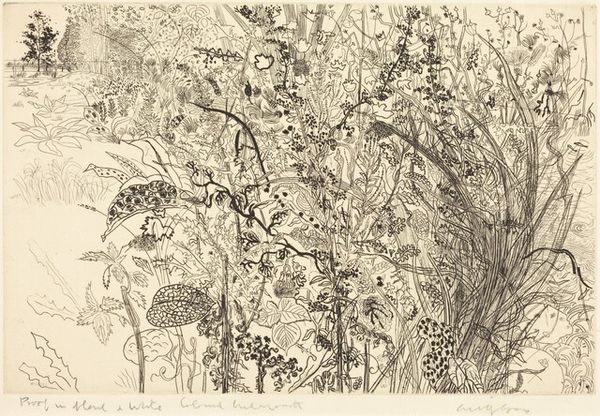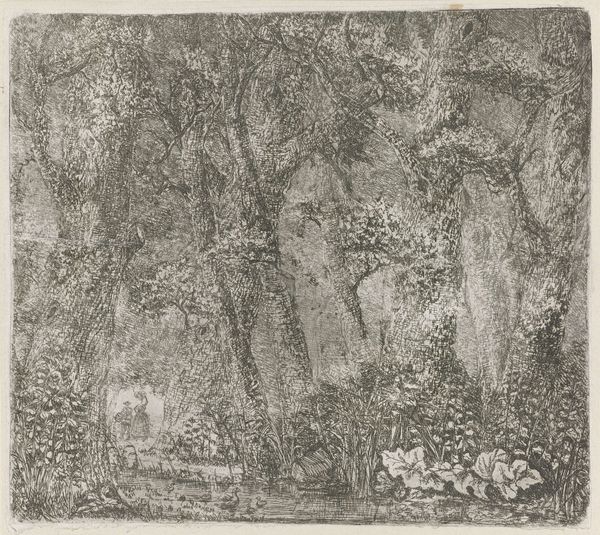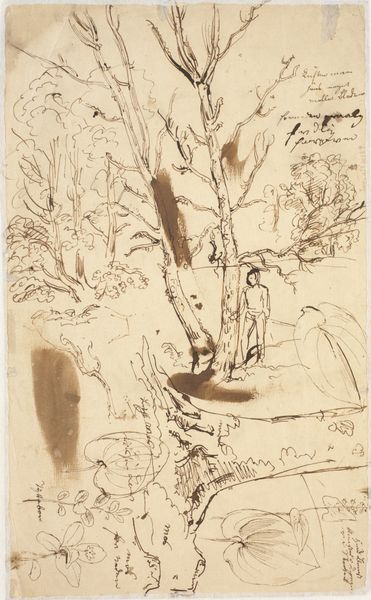
print, etching
# print
#
etching
#
landscape
#
etching
#
plant
#
realism
Dimensions: height 140 mm, width 200 mm
Copyright: Rijks Museum: Open Domain
Curator: Welcome. Today, we're looking at Johannes Löhr’s etching, "Kruiden tussen het gras," created sometime between 1892 and 1928. It's a print of what seems to be wild herbs in a garden. What's your initial response to it? Editor: Overwhelming. Dense. The blacks of the etching are rich but there are so many details packed into this tiny space, making it chaotic, but intriguing, especially considering the limited tonal range. Curator: Exactly, that tonal range is critical. While Löhr doesn’t seem widely known today, prints like this were essential in circulating images of nature. Think about access to green spaces, and who had it. These prints were like windows onto worlds often restricted to the wealthy or rural inhabitants. Were they trying to offer beauty to the working class? Were they creating a symbol of wealth to other elites? It's easy to forget that landscapes have always been intensely political. Editor: That’s a great point. For me, focusing solely on the work’s materiality and structure, the composition is also crucial. Look at how Löhr employs line. Short, broken lines, heavy hatching: everything reinforces this sense of untamed growth. There’s no horizon line. It forces your eye into the thicket and suggests the wild beauty found in common, simple plant life. Curator: This invites us to think about what Löhr defines as worthy of artistic representation. Is this emphasis on wild, uncultivated herbs a subtle rebellion against the perfectly manicured gardens of the elite? Does this subject represent how the working class' untamed lives and actions defy social constructs that try to define their freedom? Or perhaps it's about shifting perceptions and reclaiming narratives linked to common or marginalized identities? Editor: Interesting to think of Löhr potentially seeking rebellion through his choice of material. Thinking formally, the rough texture that etching lends actually strengthens the entire piece. The contrast and depth force the viewer to study all aspects of this print, considering all of Löhr’s techniques. The composition becomes part of the message, of course, just like you propose. Curator: I’ll definitely agree with you there. This intense contrast underscores the strength and resilience of natural growth. This etching makes us consider socio-economic issues embedded even in the humble growth. Editor: I was definitely not expecting to discover political themes when considering this visually striking art. Thank you for offering such a thoughtful discussion about this etching! Curator: It was my pleasure, and I'm glad that our combined perspectives offered you a deeper understanding of the work.
Comments
No comments
Be the first to comment and join the conversation on the ultimate creative platform.

